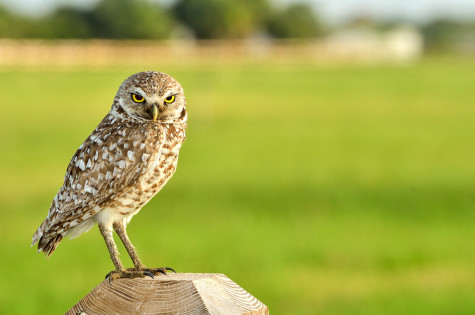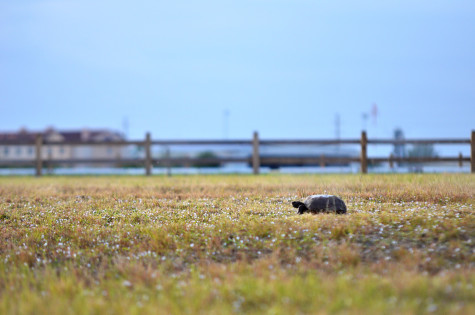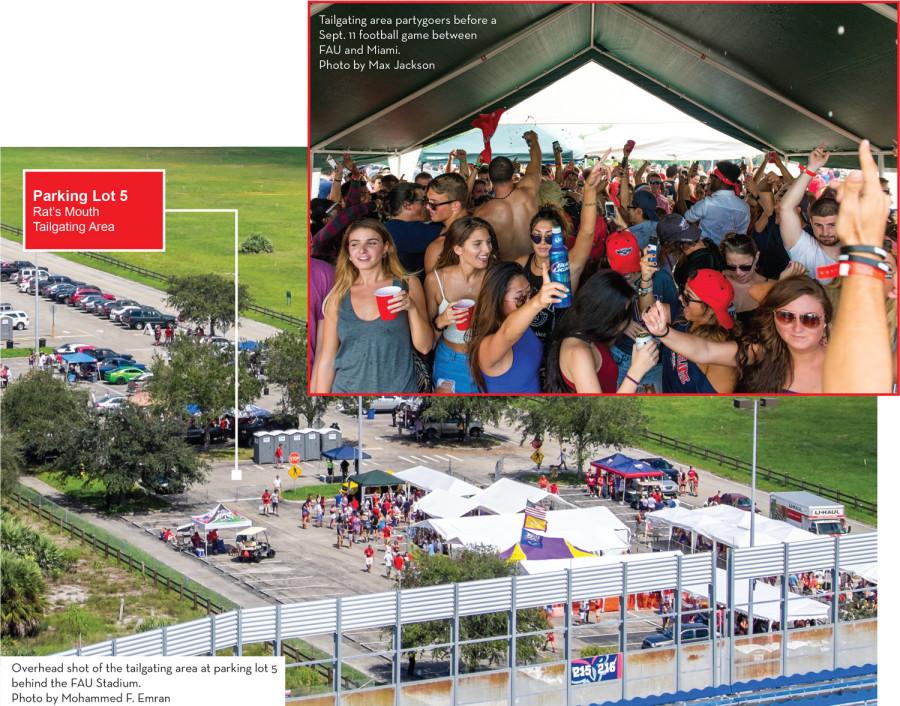FAU’s pre-gaming spills over into conservation area
Environmentalist are upset with administration’s lack of concern for wildlife
November 9, 2015
The Florida Atlantic football team was pulverized in a 44-20 loss to the University of Miami Hurricanes, but not all of the destruction took place in the stadium.
After full bladdered pre-gamers trampled on the homes of gopher tortoises and burrowing owls that live next to the stadium, environmentalists are fearful for what will happen if partying continues so close to their home.

“I was only there for a few hours and I saw several people walking into the conservation area,” said Melody Schmaltz, a junior who attended the game. “If I were an animal I wouldn’t have wanted to be living there.”
The controversy began five months ago, when the decision was made to move the “Rat’s Mouth” tailgating area to Lot 5, which runs parallel to the ecological preservation site.
The “Rat’s Mouth” is an open parking area near the stadium where students can come in several hours before the game to grill and hang out for pregame activities.
The conservation area that’s adjacent to the parking lot is separated by a small post and a rail, wooden fence with signs notifying individuals about the protected area.
The area is home to many native animals, including the protected gopher tortoise and the burrowing owl.
While many students spent their afternoon in the “Rat’s Mouth” getting excited for the game, some were also there to help protect the area.
Mission Green, an FAU student organization that is dedicated to promoting environmental sustainability, was at the game to assist in cleanup efforts and protect the preserve.
“We have done a lot of cleanups at the games. This was the worst that we have ever seen though. We filled a big bag with litter just from the preserve alone,” said Kelly Mclaughlin, a member of Mission Green.
This intrusion into the preserve is what has the conservationist concerned.
According to the Florida Fish and Wildlife Conservation Commission, the gopher tortoise is important to protect not only because its declining population classifies it as threatened, but because many other species rely on the reptile.
The FWC describes them as “a keystone species, serving as the backbone for the plant and animal community in which it lives.”
Jon Moore, a biologist at the Jupiter campus who studies gopher tortoises said, “Gopher tortoises change their environment with their burrowing activity. They help many other species live in the same habitat and increase species diversity.”
Gopher tortoises create tunnels that can be 15 feet below the surface and twist as far as 45 feet past the entrance.

“This unique architecture is what makes them so valuable,” he said.
Moore explained that several hundred species create homes by tunneling off of the main burrows.
To protect these areas, Florida state legislators have passed laws that penalize anyone who harms gopher tortoise burrows. There are Florida statutes that make it illegal to disrupt or damage their homes.
Penalties for harming a gopher tortoise burrow can be as high as $500 and a maximum of six months jail time.
This puts any irresponsible tailgaters that cross into the conservation area in possible criminal trouble.
Florida Fish and Wildlife officer Rachel King said, “There was evidence that some of the burrows had been trampled on. They had to be dug back out by either the animals or biologists.”
On Sept. 18, a week after the Miami game, representatives from FAU, FWC and local biologists met to discuss the damage to the conservation area.
Biologist and FAU professor Evelyn Frazier told the committee that she opposed tailgating so close to the preserve.
She expressed to the UP in an email that “there should not be any tailgating so close to these animals [gopher tortoises and burrowing owls]. The university should rethink their location for tailgating.”
Executive Director of Campus Life Brett Klein said, “FAU has no plans though for moving the ‘Rat’s Mouth’ out of Lot 5. There is now a temporary fence around the conservation area with a gate that will be locked during all home games.”
When asked what other measures were being made to prevent tailgaters from entering the protected area, he said, “We will have an increased security presence, not for safety but to ensure that individuals stay out of the protected area. We will also be bringing in more port-o-johns.”
However, even with the new fence being built, some students are still concerned with the tailgating being so close to Florida’s threatened wildlife.
A “cease and desist” petition was started on Sept. 30, at Change.org, demanding that FAU President Kelly stop the tailgating from continuing and work to “promote the awareness of the purpose of the conservation area.”
As of Oct. 17, the petition had over 800 supporters.
In the interview that came before the petition was started, Klein did express “that they would work to establish a more permanent fence for next year.”






